A parallel plate capacitor is charged as shown (Q is given). A metal slab with the total charge +Q is placed inside the capacitor as shown. The thickness of the slab is d. The distance between the top plate and the top of the slab is 2d, and the distance between the bottom plate and the botthom of the slab is d. Each plate is grounded through a galvanometer as shown . Find the charge that passes through each galvanometer after both switches are closed simultaneously.
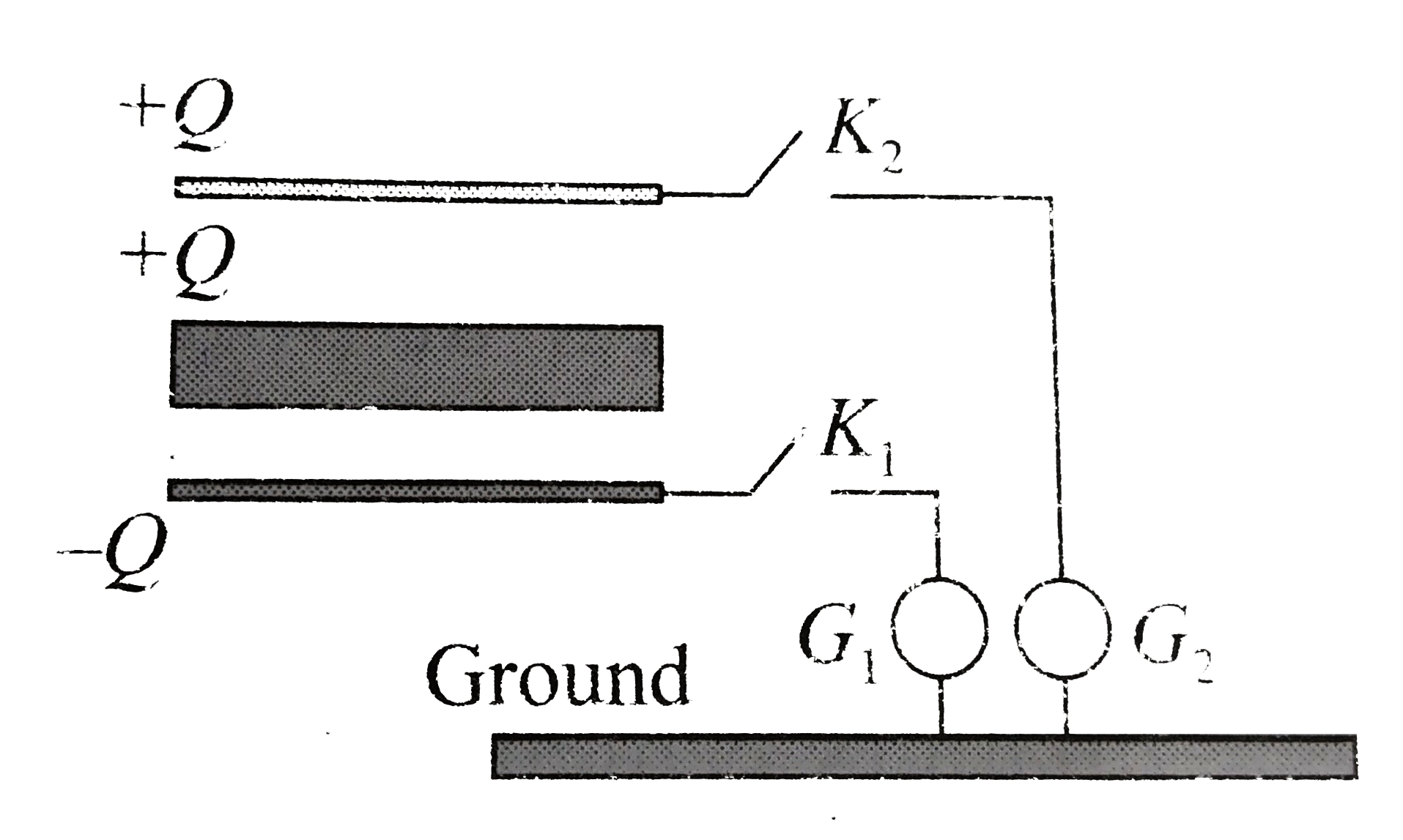
A total charge of −Q/3 flows (throughG1) from the bottom plate to ground.
A total charge of +4Q/3 flows (throughG2) from the top plate to ground.
A total charge of +Q/3 flows (throughG1) gtom yhr bottom plate to ground.
A total charge of −4Q/3 flows (through G2) from the top plate to ground.
The correct Answer is:A, B
a.,b.
Initial charges on each surface
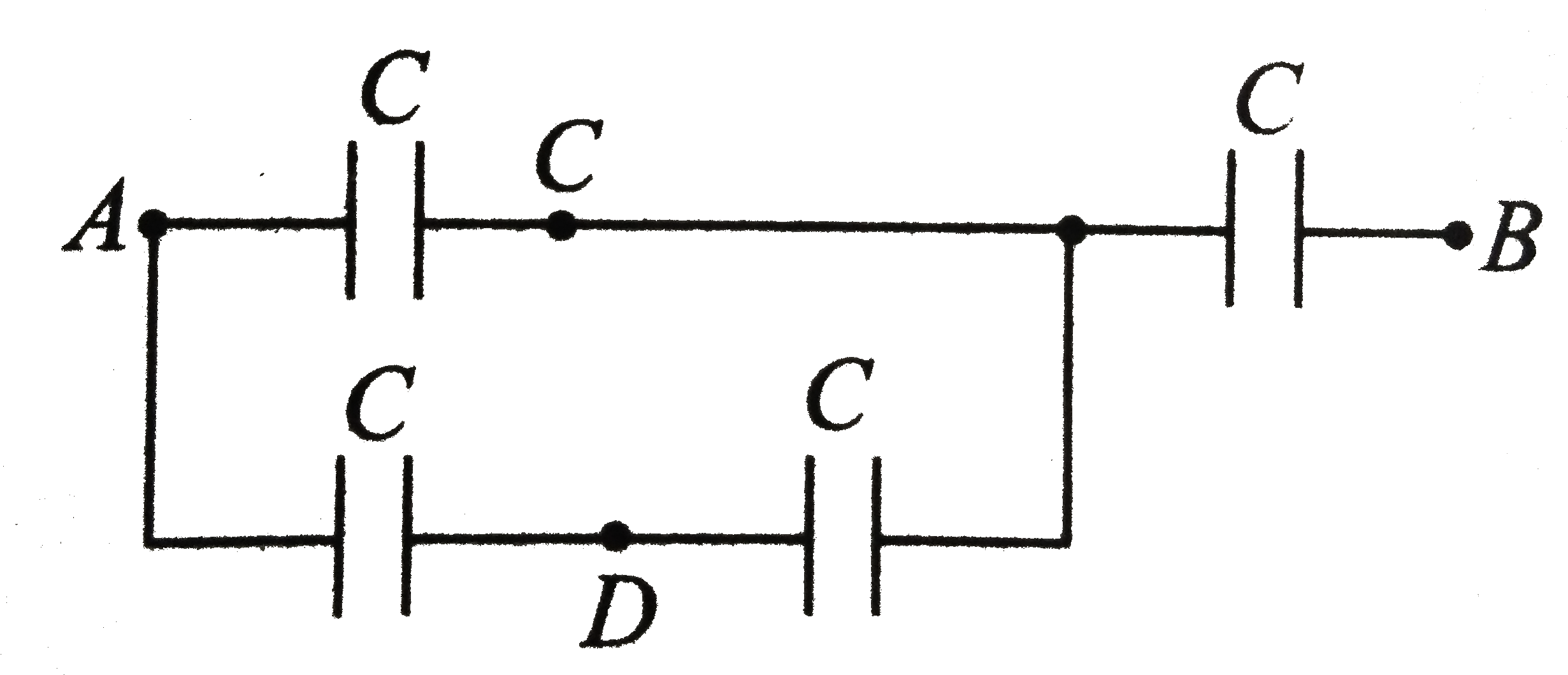
Chare on outer surfaces
qa=qb=Q+Q−Q2=Q2
and qb=Q−(Q−Q)2=Q2
C1=C=ε0A2d or C2=2C=ε0Ad
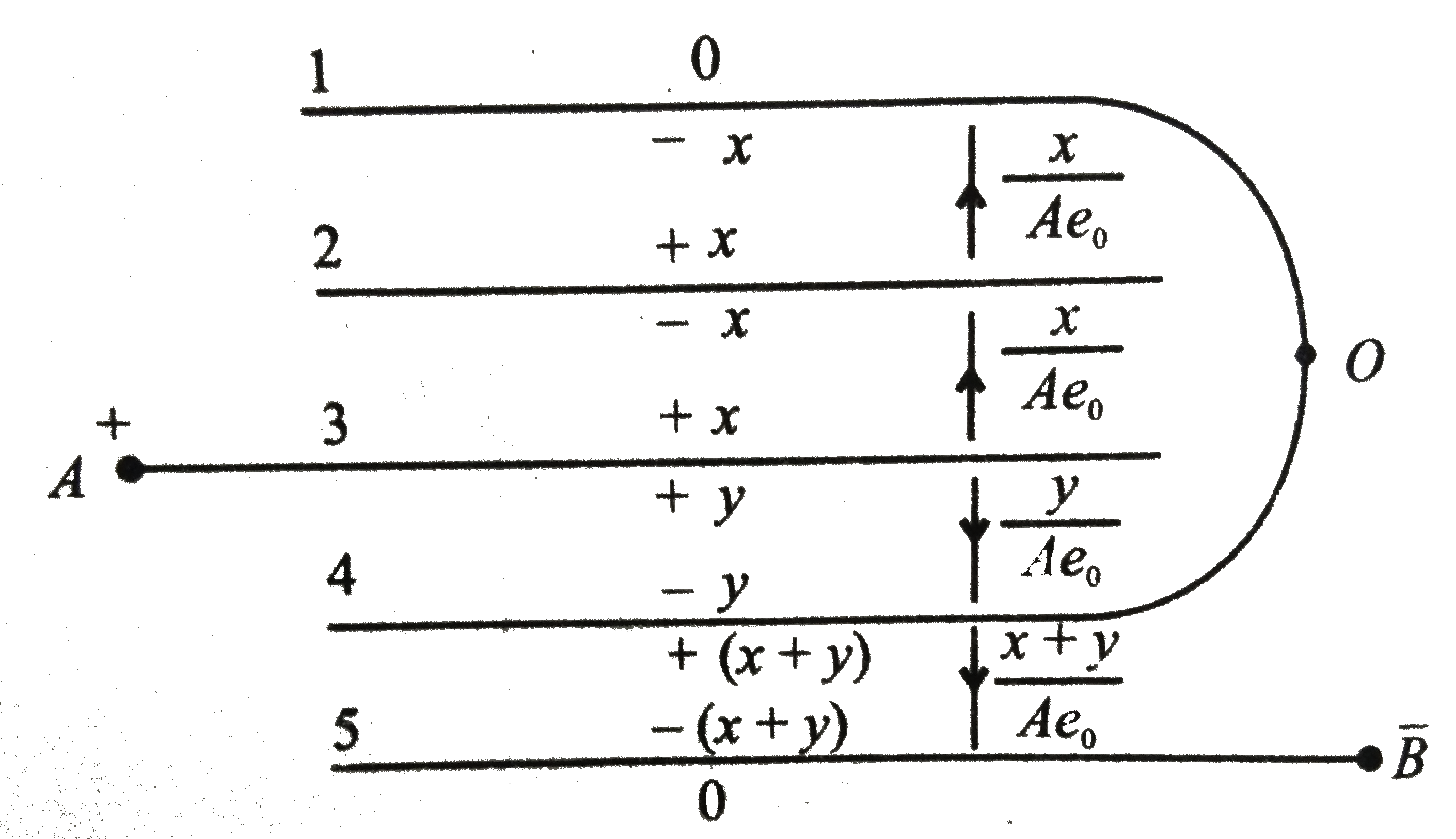
When both switches are closed the circuit can be redrawn as shown. Moving from A and B
Q+xC−(Q0x)2C=O or x=Q3

Final charges on each plate will be
Hence charge moving from top plate to ground is Q−(−Q3)
=4Q3 and from bottom plate to gound is −Q−(−2Q3)=Q3
Similar Questions
The plates of a parallel plate capacitor are charged up to 200 V. A dielectric slab of thickness 4 mm is inserted between its plates. Then, to maintain the same potential difference between the plates of the capacitor, the distance between the plates increased by 3.2 mm. The dielectric constant of the dielectric slab is
View SolutionA parallel - plate capacitor of plate area A and plate separation d is charged to a potential difference V and then the battery is disconnected . A slab of dielectric constant K is then inserted between the plate of the capacitor so as to fill the space between the plate .Find the work done on the system in the process of inserting the slab.
View Solution
Knowledge Check
- Question 1 - Select One
As the distance between the plates of a parallel plate capacitor decreased
AIf both assertion and reason are ture and reason is the correct explanation of assertion.BIf both assertin and reason are ture but reason is not the correct explanation of assertion .CIf assertion is true but reason is false.DIf both assertion and reason are false.
A dielectric slab is inserted between the plates of an isolated capacitor. The force between the plates will
View SolutionThe plates of small size of a parallel plate capacitor are charged as shown. The force on the charged particle of 'q' at a distance 'l' from the capacitor is : (Assume that the distance between the plates is d<<l)
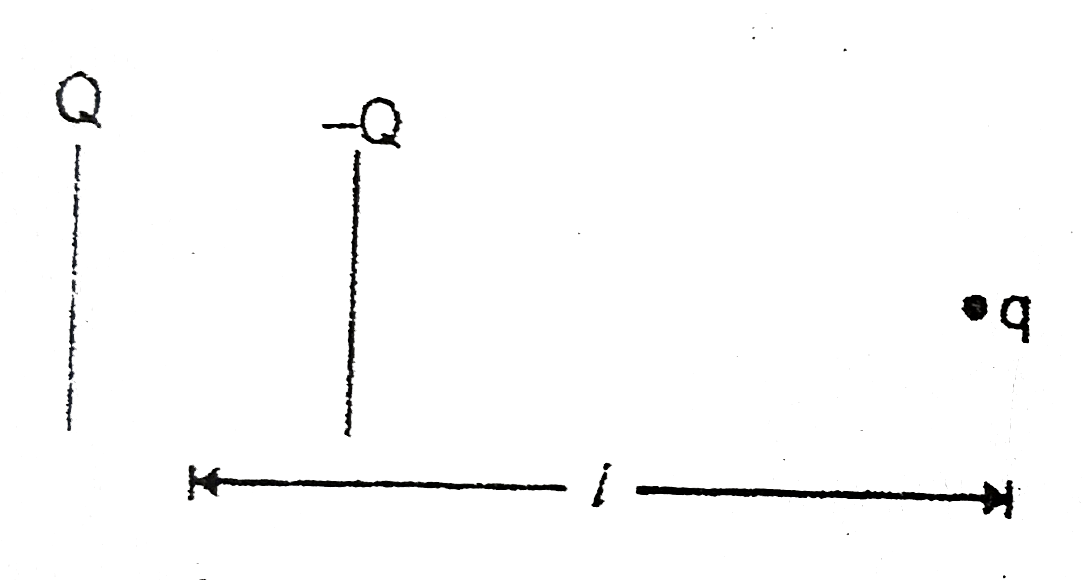 View Solution
View SolutionThe plates of small size of a parallel plate capacitor are charged as shown. The force on the charged particle of 'q' at a distance 'l' from the capacitor is : (Assume that the distance between the plates is d<<l)
 View Solution
View SolutionThe capacitor shown has square plates of side L and has gap d between the photos. In the dielectric constant of the materiale of the slab is k , the capacitance of the capacitor is
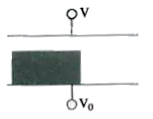 View Solution
View SolutionCharges 2q and −3q are given to two identical metal plates of area of cross section A. the distance between the plates is d. Find the capacitance and potential difference between the plates.
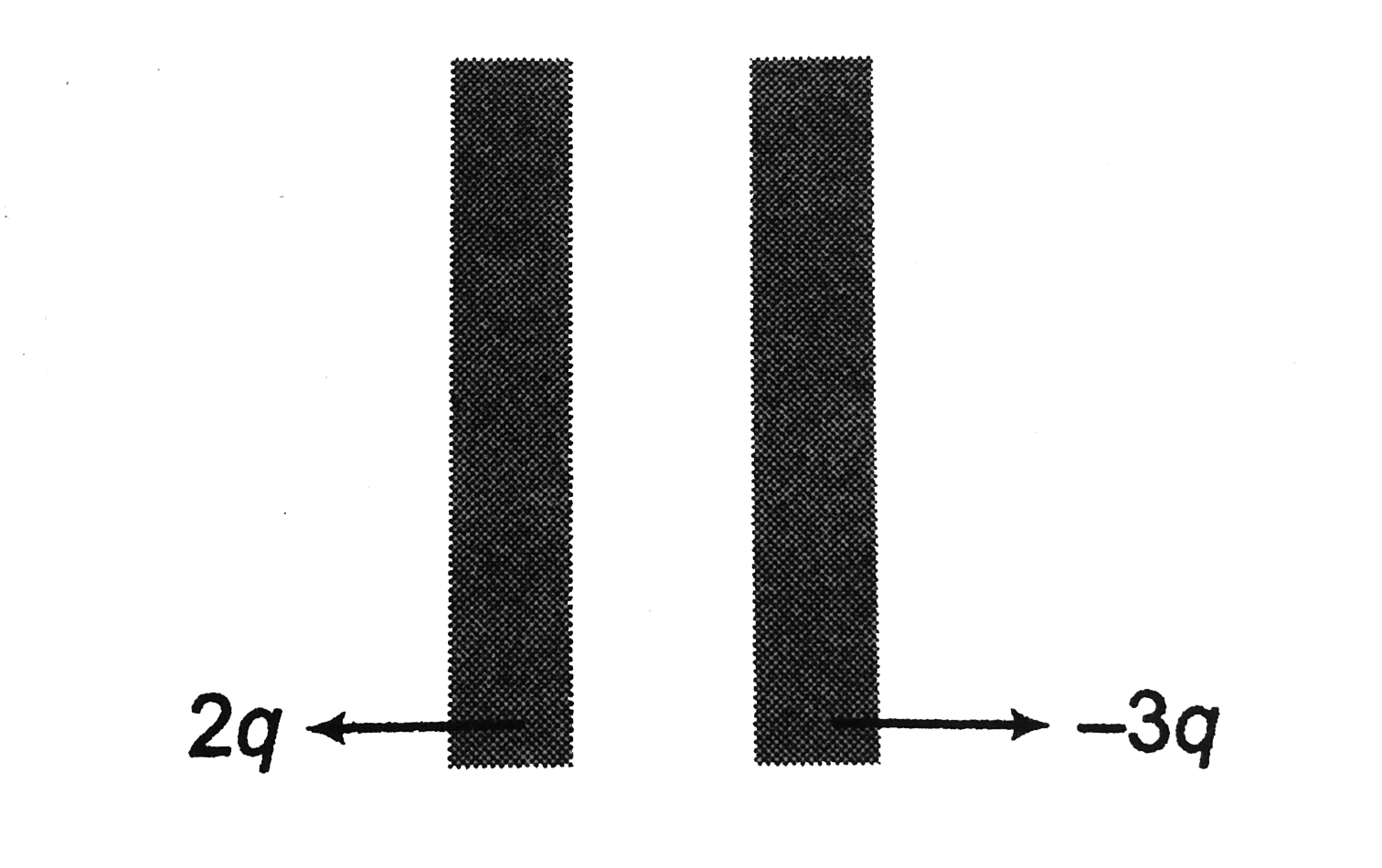 View Solution
View SolutionIn figure , the plates of a parallel plate capacitors have unequal charges. Its capacitance is C. P is a point outside the capacitor and close to the plate of charge -Q. The distance between the plates is d. Then
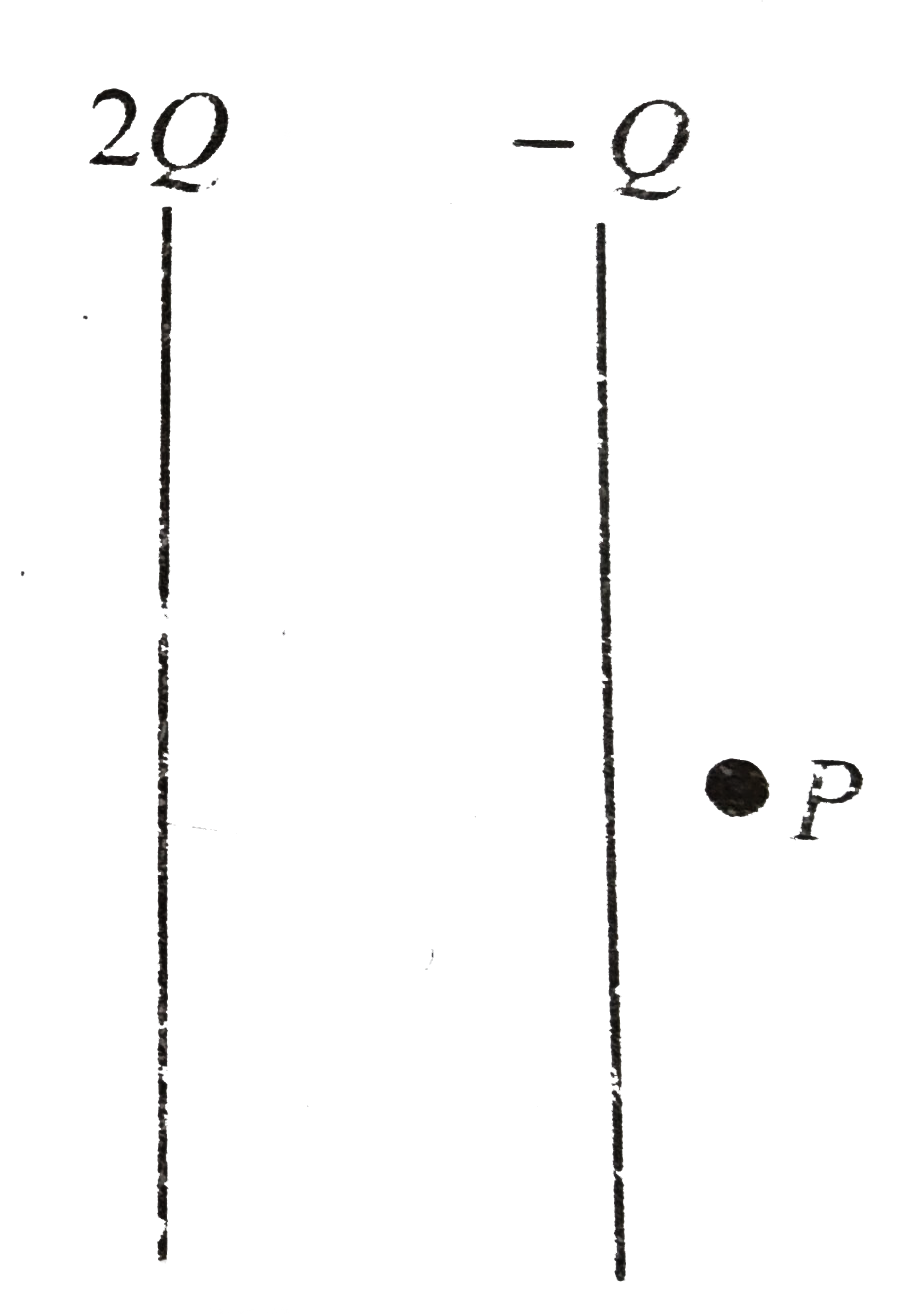 View Solution
View SolutionA capacitor is given a charge q. The distance between the plates of the capacitor is d. One of the plates is fixed and the other plate is moved away from the other till the distance between them becomes 2d. Find the work done by the external force.
View Solution

